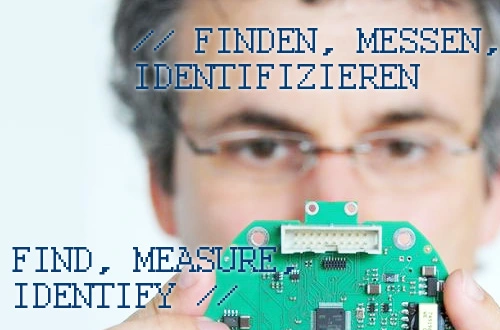Find, measure, identify
Analytical methods made in Adlershof measure contaminant concentrations in potentially explosive environments and identify antibodies for improved tumour therapy.
No sparking, no high temperatures, no static buildup – the devices that Analytical Control Instruments (ACI) develops and produces in Adlershof must be especially safe and reliable if they are to measure the concentration of contaminants in potentially explosive environments. Workplaces in industrial production or the oil industry can therefore be monitored, or the quality of waste gas cleaning in coal fired power stations.
The measurements are based on the principle of photoionisation. “That is our main field of expertise,” explained Managing Director Olaf Herrmann. High energy UV light ionizes specifically the hydrocarbon molecules, and the emitted electrons can be measured as a flow of electricity: the stronger the current, the higher the concentration of molecules. “Our system is ultra sensitive. Under laboratory conditions we can measure concentrations in the parts per billion range,” emphasised Herrmann who, with his eight coworkers, develops the electronics that regulate the measurements and evaluate the signals.
The quality of their devices has got around. “We always work on request,” reported Herrmann. ACI does not have a marketing division, so cooperation with customers is managed via distributors. These distributors set up the contacts, e. g. with Chinese companies, and then negotiate on site with customers the precise specifications of the devices.
The bioanalytics company Proteome Factory operates as both a user and a developer. This duplex experience is also benefiting the current project that Managing Director Christian Scheler and his team of seven are running together with the Charité and the Federal Institute for Materials Research and Testing (BAM) for developing a new marking method for biomolecules. Unlike the previous methods of marking antibodies with fluorescent dyes, this new method uses various metals.
For the analysis, a tissue sample is flooded with various types of antibody. Some obey the so called lock and key principle by docking on certain proteins that, for instance, are characteristic for a tumour type. These antibodies are afterwards identified by means of a laser beam that scans the sample and vaporises them. The emitted gases then contain metals that are identified with a mass spectrometer. “The advantage is that we can now test up to eight, and in future twenty different antibodies on a single tissue section, and not only two or three,” explained Scheler, not to mention the additional advantages in the boost to speed and sensitivity. And the better a disease is understood, the better its therapy.
by Uta Deffke
Links:
